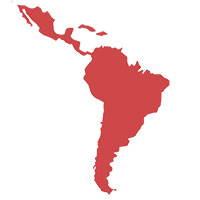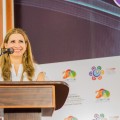Outright refusal of an agreement that is “equitable” is unheard of at the international stage. That said, has the UNFCCC ever seen an equitable agreement? Many countries have begun to question what is equity, and what form it should take.
Comparing perspectives, when it comes to equity, is tremendously difficult as they can vary significantly from place to place, society to society, time to time, culture to culture, and person to person. Agreeing on what exactly “equity” means as applied to addressing climate change when there are negotiators from nearly 200 countries appears next to impossible. All the more so when equity is associated with three equally as complex concepts: intergenerational equity, intragenerational equity, and common but differentiated responsibilities (CBDR).
Fairness between current and future generations of community members is the basis of intergenerational equity. Achieving a balance between satisfying out needs now and setting aside enough to provide for the needs of the future. The native Iroquois of North America have a “great law” that requires thinking seven generations ahead when deciding whether the decisions they make today would benefit their children seven generations into the future; this is intergenerational equity.
Measuring equity and integrating environmental costs into development has traditionally been accomplished through cost-benefit analysis. Ideally, the costs and benefits would be distributed equally between all parties, regardless of socio-economic, cultural, or racial status. For intergenerational equity, arguments over the degree of discounting future costs have stymied the issue with concerns to the various funding agencies.
Taking into consideration that everyone regardless of where they live or where they are from have the same basic needs is referred to as intragenerationalequity. Poverty deprives people of choices and can lead to actions that can damage the environment over different scales. Higher levels of affluence tend to damage the environment even more because of increased levels of consumption. Achieving equity requires subtracting the unjust gains of one party to make up for the losses by the other party, also known as Aristotle’s corrective justice.
Transitioning to low-carbon development allows for the sharing of opportunities and burdens for both developed and developing nations, which is the context of CBDR. Countries tend to emphasise one of two options: responsibilities or capabilities. The latter is the capacity countries have to deal with climate change through technical and financial resources that can be used for emissions reductions and researching climate adaptation measures, particularly in building capacity of developing countries. Growing economically due to the emissions of greenhouse gases represents the historical responsibilities of developed countries. Additionally, countries with the highest vulnerability to climate change have become the focus of the CBDR dialogue.
The primary example of equity in the UNFCCC is in Article 3, paragraph 1:
The Parties should protect the climate system for the benefit of present and future generations of humankind, on the basis of equity and in accordance with their common but differentiated responsibilities and respective capabilities. Accordingly, the developed country Parties should take the lead in combating climate change and the adverse effects thereof.
Despite seemingly clear language, countries and NGOs continue to argue over the value and definition of equity. At COP20, India, among other countries, made it clear the equity and CBDR must be the basis of the global climate deal in Paris next year. Youth based NGOs continue to call for the highlighted importance of intergenerational equity. Indigenous peoples and vulnerable populations have asked for immediate actions towards intragenerational equity. Investigating both the historical context as well as the future alternatives is essential for an equitable understanding.













comment